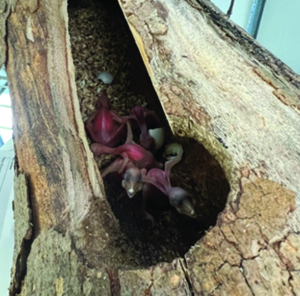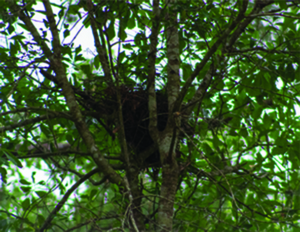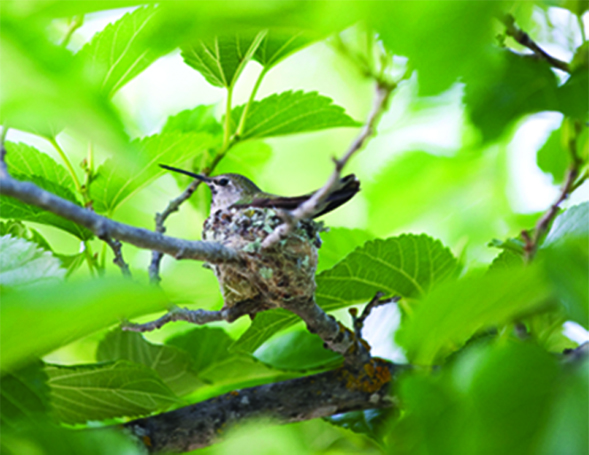When to Leaf Trees Alone
By Jenn Guess, Hospital Manager

Hatchling Acorn Woodpeckers admitted to CWC after branch was trimmed from tree
Trees are essential to our environment in many ways. They absorb and store carbon dioxide, which helps mitigate climate change by reducing greenhouse gases, and are a primary source of oxygen production. Roots help bind the soil preventing erosion, and some varieties of trees even improve soil by making it more fertile for plant growth. One of the most important aspects of trees is their role in supporting wildlife by providing habitat, food, shelter, and nesting sites for a wide variety of species. For example, Acorn Woodpeckers excavate nesting cavities in trees to raise their young and reuse these nest holes for many years. Western Gray Squirrels build compact ball-shaped nests on sturdy branches high in the trees, typically in the canopy. Hummingbirds are known for their tiny and intricate nests made from plant material and spider webs. These golf ball sized creations can be found in well-concealed spots in trees and shrubs.
At CWC we recommend planting native plants to help support wildlife in your neighborhood. In the wild, vegetation is only limited by resources and each species’ genetics. When trees grow near human development, trimming and maintenance is often needed to keep plants healthy and man made structures safe.
Tree trimming serves several vital purposes, making it an essential aspect of tree care. It removes excessive dead branches, allowing the tree to allocate nutrients towards growth. Trimming also removes diseased limbs, which prevents the spread of infection and promotes overall tree health. Overgrown branches can also pose a significant risk to people and property, but regular trimming ensures that branches do not grow too close to buildings, power lines, or roadways.

Tree squirrel nest in tree
Selecting the appropriate time of year to trim trees is critical for protecting native wildlife. Here at CWC we often see the detrimental aftermath of tree trimming gone wrong. Each spring, summer, and fall we admit hundreds of orphaned animals due to people cutting down and/or destroying nests. Tree trimmers can also permanently scare away bird parents if they disturb or linger around a nest for too long. December is the ideal month to trim because many tree species are dormant, they lack leaves allowing for a clearer view of the tree’s structure, and it is the time of year in which it is least likely to disturb an active nest. Most birds tend to nest between February and August, although some species like hummingbirds, doves, and pigeons have been known to nest year-round in Southern California. Tree squirrels can mate twice a year and usually have active nests between January through April and July through October. Historically these time frames were more consistent but shifts in climate conditions have made these nesting periods slightly unpredictable.
Before starting a tree trimming project, it is always advisable to consult a local wildlife expert, arborist, and/or conservation organization to understand the specific needs of the wildlife in the area. Prior to trimming, inspect the tree carefully for active nests. Young animals will often become quiet and stay still if they feel threatened, so using binoculars to examine each branch for movement or activity can be helpful. Look on the ground below the tree for a collection of fresh bird droppings. This can signal that a nest above might be inhabited. If possible, trim branches by hand so it is easier to see up close what is being removed. Only trim branches that are necessary for safety and tree health and leave as much natural habitat as possible, including cavities and foliage. Dead branches also provide important habitats for a number of insect and bird species. Consider leaving some deadwood on trees if it does not pose a safety risk.
Through responsible tree trimming, it is possible to safely enjoy healthy plants while simultaneously protecting the habitats that so many wild animals need in order to thrive in the wild.

Anna’s Hummingbird nest in a tree
